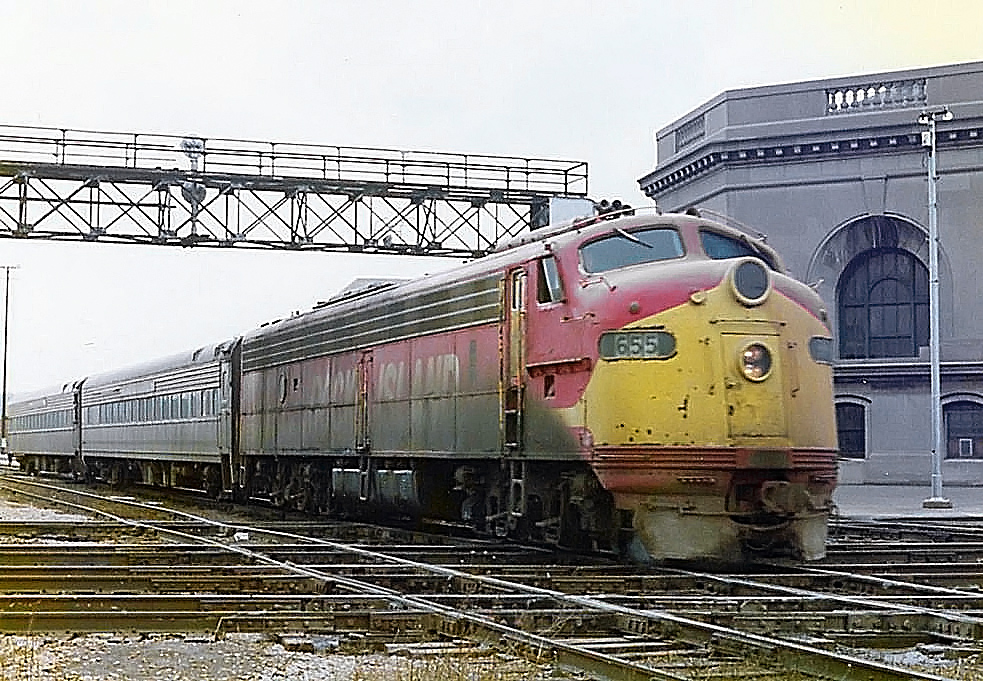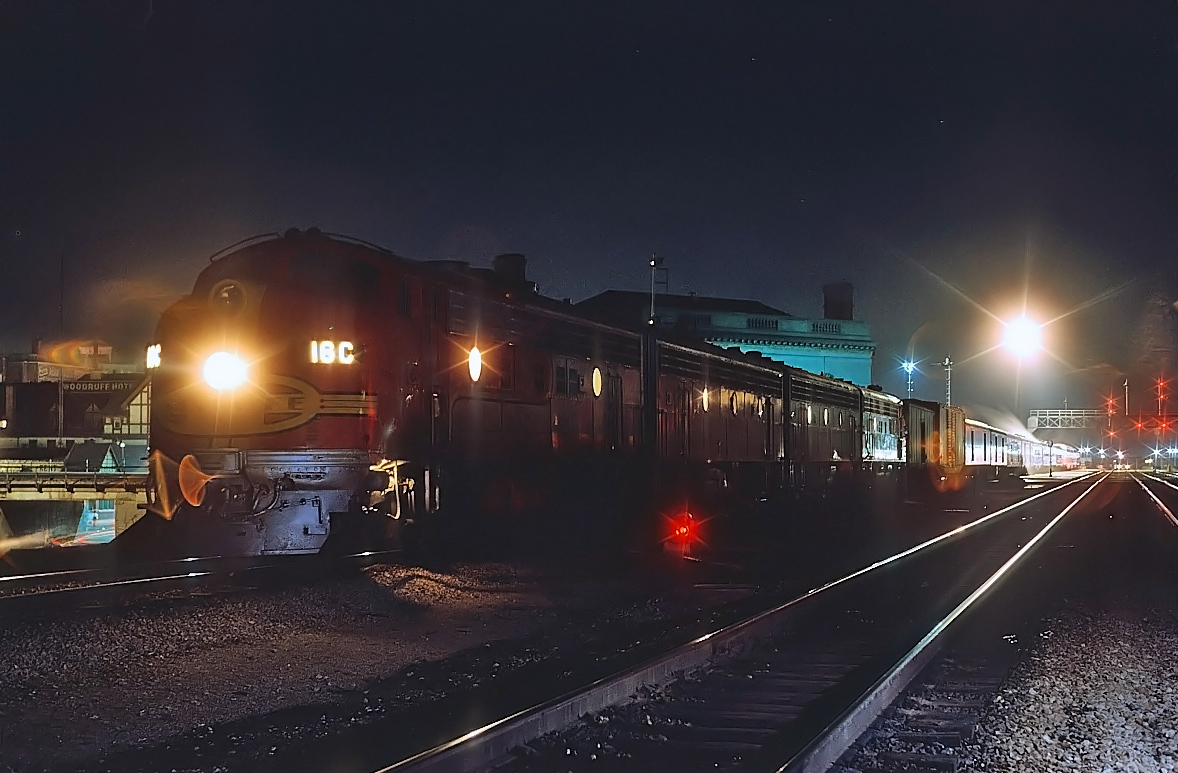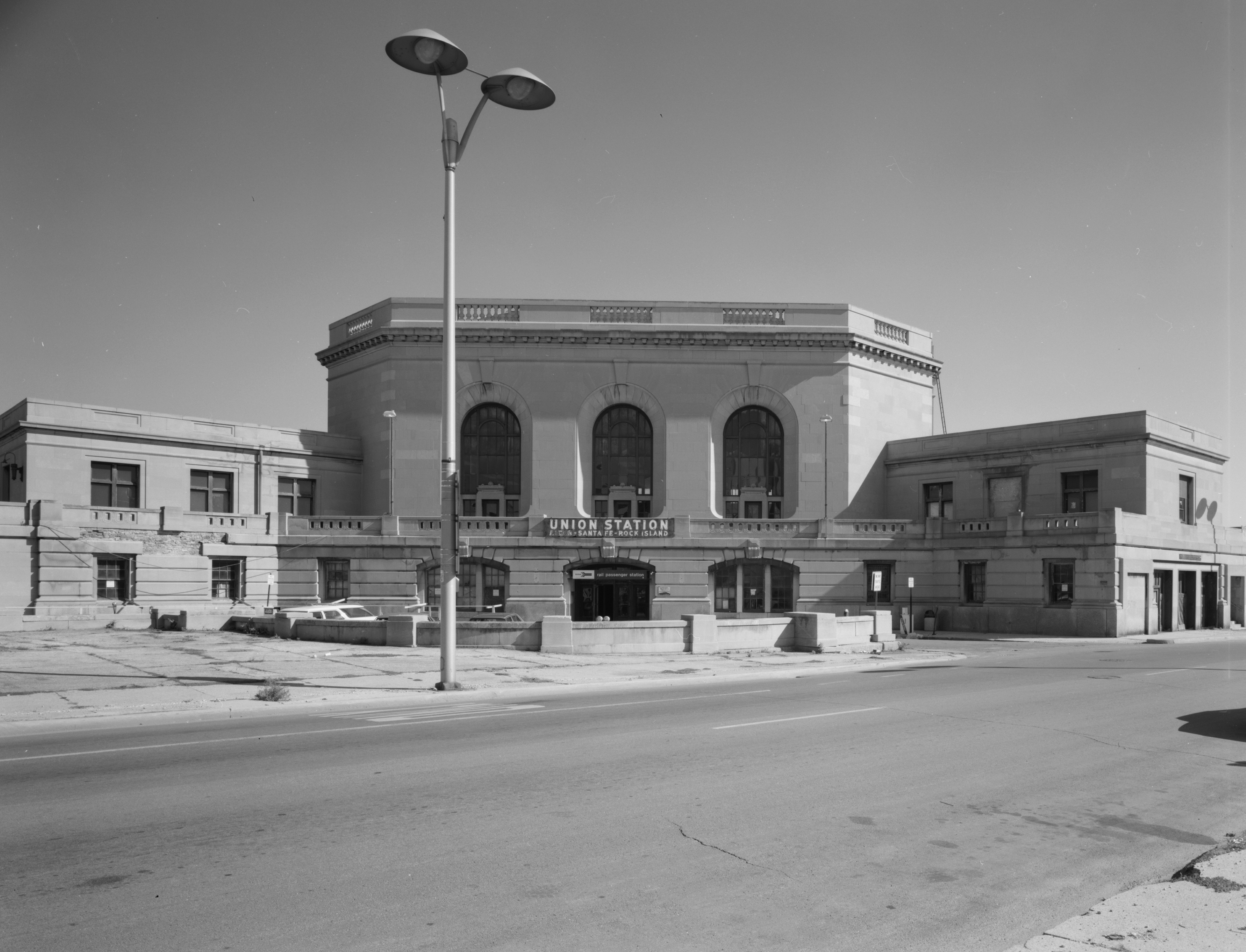Joliet Union Station: Photos, History, Current Status
Published: February 5, 2025
By: Adam Burns
Situated in the heart of Joliet, Illinois, Joliet Union Station not only exemplifies classic architectural designs of its era but also offers rich insights into the evolution of transportation in the United States.
Built in the Beaux-Arts-style, the 1912 facility is now inactive. During its peak years the station - located just outside the metropolitan expanse of Chicago - served six railroads and over 100 intercity trains daily, as well as considerable commuter and services
In 1978, Union Station was incorporated into the National Register of Historic Places, acknowledging both its architectural significance and its integral role in the railroad history of the city.
Until 2014, it was utilized by Amtrak and Metra trains, before its operations were fully transferred to the Joliet Transportation Center in 2018. Currently, the station is under the ownership of the city of Joliet and functions as a banquet facility.
The Beginnings: A Testament to Rail's Ascendancy
The current Joliet Union Station was built to accommodate and consolidate the burgeoning rail traffic through Joliet, a pivotal crossroad connecting various parts of Illinois and beyond.
Construction commenced in 1910, orchestrated by the Chicago & Alton Railroad amid rapid urbanization and increased demand for efficient public transit.
The station was designed in the Beaux-Arts style by Jarvis Hunt, a renowned architect from Chicago who also contributed to the design of Kansas City Union Station around the same time. Constructed by the Adam Groth Company from Joliet, the station boasted a steel framework and a facade of Bedford limestone, complemented by bronze fixtures and interiors adorned with Tennessee marble.
The architectural plan comprised an entry through a street-level ticket lobby, leading to a grand waiting room on the second floor, designed to serve passengers before their train embarkation. The station's construction incurred a cost of $250,000.
Following two years of work the station held a grand opening on October 14, 1912, marking a significant event in Joliet as it commenced operations for all four major trunkline railroads in the area.
The inauguration was celebrated with a banquet for 450 attendees and an audience of 1,500 people, which received accolades from the Joliet Evening Herald.
The newspaper commented on the "excellent yet dry and smokeless banquet," extending the same compliment to the speeches delivered at the event, albeit with the caveat of them also being "smokeless but not dry."
Joliet Union Station quickly became an icon of progress, standing regally with its limestone façades and imposing columns.
At its operational zenith, the station catered to over 100 trains daily, utilizing eight tracks—four directed north-south for the Santa Fe and Alton Railroad, and another four east-west for the Rock Island.
Passengers accessed the platforms via tunnels underneath the tracks, serving both directions. The station not only supported passenger transit but also facilitated U.S. Mail services and express parcel handling for the associated railroads, with each maintaining distinct freight and service infrastructures elsewhere in Joliet.
An interlocking tower, constructed around 1913, coordinated the complex train movements through this crucial junction.
Architectural Marvel: Beaux-Arts Elegance
Visitors were welcomed by an impressive interior featuring a spacious waiting room, adorned with high ceilings and ornate decorations. The use of durable materials such as steel and limestone ensured longevity, while its spacious concourse was designed to handle large crowds efficiently, reflecting the grandeur of Beaux-Arts architecture.
The aesthetic elegance of the Union Station extends beyond mere functionality; it symbolizes the cultural and economic optimism of early 20th-century America. From its elaborately adorned facades to the intricate craftsmanship within, the station reflects an era when public buildings were designed to inspire and elevate the human spirit.
Historical Importance
Union Station was strategically placed to serve as a nexus for multiple rail lines, offering connections to major cities such as Chicago and St. Louis. The Chicago, Rock Island and Pacific Railroad; the Atchison, Topeka and Santa Fe Railway; and the Michigan Central Railroad all passed through the station, testament to its pivotal role in regional transportation.
For much of the 20th century, the station saw thousands of passengers daily, making it a vibrant hub of activity. It was integral not only to passenger transportation but also to freight, serving as a critical juncture for the transportation of goods across the Midwest.
 Rock Island E8A E8 #655 leads the eastbound "Peoria Rocket" across the Santa Fe diamonds in front of the Joliet Union Station on April 2, 1977. Doug Kroll photo.
Rock Island E8A E8 #655 leads the eastbound "Peoria Rocket" across the Santa Fe diamonds in front of the Joliet Union Station on April 2, 1977. Doug Kroll photo.Decline and Preservation: A Reawakening of Historic Value
The latter half of the 20th century witnessed a decline in rail travel as automobiles and airplanes became the preferred modes of transportation. Union Station, once commanding bustling crowds, faced dwindling numbers of passengers, leading to a state of neglect and deferred maintenance.
The first change occurred in 1925 when Michigan Central stopped utilizing the faicilty. After World War II the decline accelerated.
In the late 1940s, the ticket lobby on the ground floor was closed and sealed off. In 1960, a dropped ceiling was added to the grand waiting room on the second floor, creating a space that quickly became inhabited by pigeons. Additionally, the tunnels leading to the platforms were filled in, necessitating some passengers to cross the tracks to board their trains.
With the establishment of Amtrak in 1971, the majority of services at the station came under its management. However, Amtrak did not take over the Rock Island's operations, which continued to run commuter trains between Joliet and Chicago until the early 1980s, when Metra took over the operations and track ownership.
Despite its declining usage, the historical and architectural significance of Union Station was recognized. In 1978, it was listed on the National Register of Historic Places, a crucial step toward preserving its legacy.
Modern Adaptations and Future Prospects
In recent years, the station has undergone revitalization initiatives to restore its historic grandeur and adapt it for modern purposes. A restoration project undertaken in the early 21st century aimed to highlight the station's architectural beauty while incorporating necessary updates to serve the contemporary transit needs.
A contemporary addition to the site is the Joliet Gateway Center, which integrates the historic station with new transportation facilities to enhance commuter experience. These developments underscore the ongoing commitment to making Union Station a cornerstone of regional transit, while respecting its historical significance.
Symbol of Heritage
Today, Union Station stands as a venerable monument, emblematic of early 20th-century American endeavors to forge connections across vast landscapes through rail.
For the community of Joliet and its surroundings, the station is more than a transit point—it's a symbol of architectural resilience and a living chronicle of the city’s history.
It is a reminder of the transformative eras in transportation and serves as a bridge between the past and the future, evoking nostalgia while continuing to operate as a modern transit hub.
 Santa Fe F3A #16C is stopped at Joliet Union Station with Train #15, the "Texas Chief"in April 1964. Roger Puta photo.
Santa Fe F3A #16C is stopped at Joliet Union Station with Train #15, the "Texas Chief"in April 1964. Roger Puta photo.Preserving Stories Through Stone
In 2010, the Illinois state government announced a $42 million comprehensive plan to replaceUnion Station and partially reconstruct the tracks. The project received $32 million from the "Illinois Jobs Now!" program, a six-year, $31 billion statewide capital initiative funded by 20-year state bonds and matching federal and local contributions. Additionally, the BNSF Railway committed $2.2 million, and the city added $7.5 million to the funding.
The project involved constructing new tunnels to serve the platforms for the Heritage Corridor and Amtrak trains, as well as building a new platform for the Rock Island District trains to the east of Union Station.
Union Station ceased operations in 2014, with passengers using temporary facilities until the completion of the new station. The Joliet Transportation Center subsequently opened on April 11, 2018.
Recent Articles
-
Minnesota's Murder Mystery Dinner Train Rides
Jul 13, 25 01:23 PM
Murder mystery dinner trains offer an enticing blend of suspense, culinary delight, and perpetual motion, where passengers become both detectives and dining companions on an unforgettable journey. -
Georgia's Murder Mystery Dinner Train Rides
Jul 13, 25 01:22 PM
In the heart of the Peach State, a unique form of entertainment combines the thrill of a murder mystery with the charm of a historic train ride. -
Wisconsin's Murder Mystery Dinner Train Rides
Jul 13, 25 01:20 PM
Whether you're a fan of mystery novels or simply relish a night of theatrical entertainment, Wisconsin's murder mystery dinner trains promise an unforgettable adventure.



